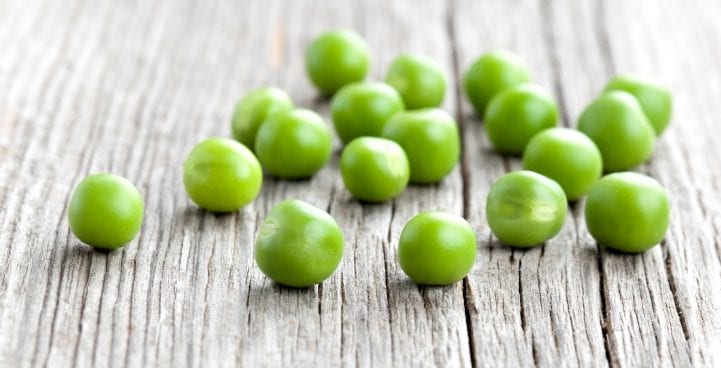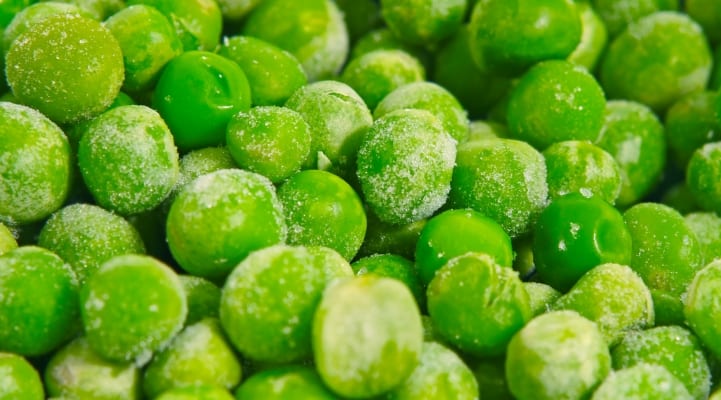Over the years the humble pea has, somewhat surprisingly, left its mark. This popular little, green, powerhouse of a veg is featured in many myths and fairy tales – Hans Christian Andersen’s beloved ‘The Princess and the Pea’ is just one example. Here we reveal more surprising things about peas. We hope you enjoy finding out something new about them!

Peas: Saving Europe From Famine and A Hit At Versailles
Originating in the Middle East, records show that peas were already a staple food in Europe by the 12th century. In 1124, Charles the Good of Flanders explicitly credits them for being instrumental in keeping famine at bay. Proving its great versatility, this legume for the masses proved fit for a king! It is said that Louis XIV, the Sun King, absolutely loved peas and that there was a flamboyant ritual at Versailles around them! Madame de Sévigné famously wrote, “The craze for peas continues; the impatience waiting to eat them, to have eaten them, and the pleasure of eating them are the three subjects our princes have been discussing for the past four days now.”
Different Types Of Peas
Peas can be differentiated into three common varieties:
- Shelling peas: Only the peas inside the pods can be eaten. The peas have a smooth, round appearance and contain carbohydrates in the form of starch, giving them a slightly floury taste.
- Garden peas: Only the peas from inside the pods are edible. Garden peas are often wrinkled and contain carbohydrates in the form of sugar, giving them a sweet taste.
- Mangetout (French for ‘eat all’): A differentiation can be made between snow peas with thin, flat pods and sugar snap peas with rounded, fleshy pods. There is no inedible parchment on the inner pod wall, so mangetout can be eaten whole. The peas inside have developed little and have a high sugar content. If you like to make your meals a bit more exotic, you can find mangetout varieties with yellow, blue, brown and even blackish-purple pods!
Tips For Buying And Preparing Peas
We have put together a few helpful tips to help you when buying and preparing peas:
- When cooking young pods, there is no need to spend ages shelling them. The peas pop out when cooked in boiling water and float to the surface.
- If you add a pinch of sugar to the water when cooking peas their greenness is better preserved.
- The waste shells make up a big proportion of the total weight: You need about 1 kg of pea pods to obtain 300 grams of garden peas.
- When buying peas in the pod, make sure they have a shiny shell and that you cannot see the peas contained therein. Steer well clear of peas with yellow flowers. These indicate a lack of freshness.
- Garden peas should be crunchy and green. Do not buy them if they have white or yellowish marks on them.
- When buying frozen peas, make sure that they are not stuck together in a block of iced peas. This indicates a break in the cold chain and that vitamins might have been lost.
Storage
Correct Storage Is Important
Peas in the pod continue to ripen during storage. Tthey obtain nutrients inside the pod via a pea-styled ‘umbilical cord’. During this process, the sugar, which gives peas their flavour, turns into starch. This can leave the peas tasting floury and bitter. Despite this, you should still leave peas in their pods until you want to eat them.
Wherever possible, it’s much better to consume freshly harvested peas immediately. Stored in a conventional refrigerator compartment peas will keep fresh for up to seven days from the time of harvest. In a Liebherr BioFresh compartment they will stay fresh for twice as long as this.

You Can Freeze Fresh Peas Yourself
Freezing peas provides a flexible alternative with hardly any compromise in terms of vitamin content and flavor. Frozen peas can be enjoyed for up to 24 months. Before freezing, you need to remove the peas from their pods, blanch them briefly, quench them in iced water, and drain off excess moisture. Spread out the peas on a tray and pre-freeze them for about 10-12 hours. Then, transfer the portion sizes you require into suitable tight sealing containers or freezer bags so that no water can infiltrate or be lost.
With already frozen or tinned peas always check the best before date on the packaging.
Food Facts
Make peas a regular part of your diet – especially if you’re following a vegetarian or vegan diet!
Peas are tasty and extremely good for you! They are packed with fiber, protein, carbohydrates, minerals and B-vitamins. This makes them an ideal source of protein for vegetarian.
Their high vitamin B1 and B2 content is good for our nervous system and our brain.. Although they are extremely filling, they only contain about 118 calories per cup.